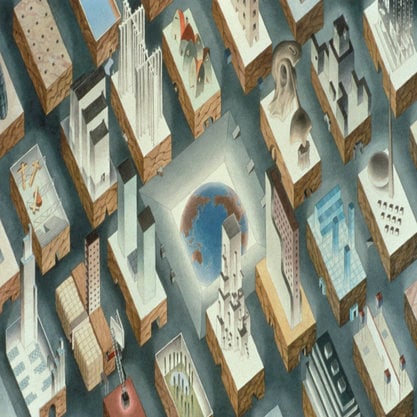Article
Circle By Fowler, Alan
Article
Circle is a book-length survey of international constructive art, first published in London in 1937. The joint editors and organizers of the parallel Exhibition of Constructive Art were the émigré Russian sculptor Naum Gabo (1890–1977), the British abstract artist Ben Nicholson, and the modernist British architect Leslie Martin. Gabo was one of several European artists and architects who came to England in the late 1930s to escape Nazi and Soviet oppression. In London, he became a friend of Ben Nicholson, with whom he discussed starting an annual publication that would promote the constructivist concept of a synthesis of modernist architecture with constructivist painting and sculpture. Circle was the outcome of these discussions, and the book and exhibition constituted the first comprehensive exposition of constructive art in Britain. Circle featured fifty-one participants, including ten from Britain. While the contributors from overseas included major international figures such as Piet Mondrian, Fernand Léger, Walter Gropius and Le Corbusier, the British artists—with the exception of Nicholson, Barbara Hepworth and Henry Moore—were far less well-known and the constructivist credentials of several were very weak. The intention to publish Circle annually was frustrated by the outbreak of World War II and the departure of Gabo and others to the USA.

